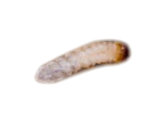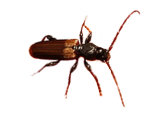
Woodworm Treatment Services in The South East Region
If you have woodworm in your home or at your business then you have a problem that is not going to go away without expert help. Pest Professionals in the South East of England can assist to present you with instant advice and help if you have woodworm problems in two extremely simple and effective stages:
We will help you to assess your problem and give you immediate, honest and FREE advice … without obligation
Your local Pest Professional will come round to sort the problem out swiftly and with no fuss
The no obligation phone consultation service applies to both residential and business customers in the South East of England. No woodworm or timber job is too big or too small for us to look at. Where appropriate we are able to offer guidance on any immediate steps required to protect your well being, property or belongings prior to a visit. If a visit is needed we let you know if there will be a call out fee and advise on the likely rates of any timber or woodworm treatment should it be necessary.
Treatment of Woodworm and Timber Pests
The extensive use of timber in modern structural applications (floor joists, roof purlins, floorboards, rafters etc.) has intensified the threat that timber pests pose. If left without treatment, these insects will cause significant damage, which can ultimately lead to structural failure of the building.
Even though the adults can fly, woodworm is commonly brought into a home for the first time through the purchase of second hand furniture and can certainly also cause serious damage to expensive wooden furniture, which may be antique.
Woodworm is in fact not a specific species of timber pest, but a generic term for the larval stage of a many timber damaging beetles.
The Furniture Beetle, a small brown insect which is about 3mm to 5mm in length and flies quite readily, is the commonest. The Furniture Beetle lays its eggs on rough, unpolished wood and as soon as they hatch the grubs bore directly into the wood – leaving no trace until they emerge as beetles three years or so later, normally between May and September. Longhorn, Powder Post, Wharf Borer and Death Watch Beetles, the latter of which only infests large, old, hardwood beams, all have a foothold in the UK.
The initial sign of woodworm many people see is neat, round holes about 2mm across in wooden surface areas, often accompanied by small piles of wood dust beneath them.
New holes show clean white wood within. Although the holes are made by emerging adult beetles that are as a result no longer a direct threat to the structure, larvae may still be burrowing away inside the wood. Crumbly edges to boards and to joists are also often a reliable indicator of their inhabitance and the necessity for woodworm control measures.
Woodworm Control

In cases where valued, rare and high priced pieces of wooden furniture, musical instruments, decorative or structural woodwork are impacted and need saving, a specialist woodworm treatment approach will certainly be required. Woodworm in furniture may be cured with the use of the appropriate type of proprietary woodworm killer, with fluid injected into key flight holes. Floorboards should be lifted to get at the undersides and the joists.
If you have woodworm you will need to get rid of them. One of our experienced Pest Professionals will carry out an initial survey to establish the type of timber pest involved and the extent of the problem, before advising on the appropriate treatment. The good news is that on evaluation a suitable treatment can eliminate woodworm completely. In the event of a heavy or hard to eradicate infestation, we can also advise on specialist heat treatment approach.
Varieties of Timber Pests in the UK
The Furniture Beetle

Easily the most prevalent timber pest in the UK. Damages furniture, musical instruments, decorative woodwork etc. Larvae live for 3-5 years in the wood.
Beetle Larvae

Timber pest larvae bore deep into the wood and emerge from May to September. They may possibly be burrowing in the wood for years.
Death Watch Beetle

Dark reddish brown. Grubs like to eat older, hardwood structural timbers and can reside in them for ten years.
House Longhorn Beetle

Black/brown beetle not native to UK and mainly found in SE England. Infests seasoned and partly seasoned softwoods like pine.
Powder Post Beetle

Red/brown beetle that needs a diet of starch found in particular hardwoods. Can be a real problem in timber yards.
Wharf Borer Beetle

A brown beetle about 1cm long which lives in decayed wet timber. Adults often found close to waterways.
If you need sound advice or swift solutions to woodworm or timber pest problems anywhere in a town or village in the South East – speak to us.








































